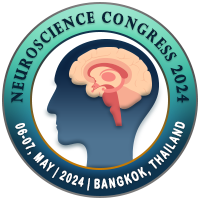
Saileyee Roychowdhury
Banaras Hindu University, IndiaTitle: Exploring Genetic Variants: Uncovering Novel Mutations in Indian Sporadic ALS Patients
Abstract
Background: Amyotrophic lateral sclerosis (ALS), a devastating, multifactorial neurodegenerative disorder characterized by late onset of symptoms, affects the motor neurons of the brain and spinal cord, manifesting as muscle weakness, atrophy, dysarthria, dysphagia and often leading to death within 3-5 years of disease onset. The genetic basis of ALS is complex with numerous implicated genes, exhibiting varying mutation frequencies across diverse global populations. Despite India being the second most populous country with an ethnically diverse population, studies on ALS within the Indian population remain limited.
Aim: This study aimed to identify potential mutations associated with the development and prognosis of ALS in an ethnically diverse Indian population. To delve into the genetic understanding of sporadic ALS (sALS), we conducted an extensive analysis involving 65 sALS cases. Screening of major ALS candidate genes through Sanger sequencing and whole exome sequencing, we sought to identify genetic variations contributing to the complexity of ALS in this unique demographic.
Results and conclusion: The results of our study revealed significant findings, including three novel variants in SETX (p.Q1349K), ERBB4 (p.V416A), and NEK1(p.Q592X) genes. Additionally, we uncovered rare variants in ANXA11 (p.R452W) and SIGMAR1(p.R208W) respectively. Several insilico tools like Mutation Taster, SIFT, PolyPhen revealed all these variants to be pathogenic in nature. Notably, our analysis did not reveal any known or novel pathogenic variants in the SOD1, TARDBP and ANG, which are recognized as major contributors to ALS in European and some Asian populations. Therefore, by exploring the unique genetic landscapes of the Indian population, our study provides valuable insights into the heterogeneity of ALS and enhances our understanding of the genetic factors influencing the development and progression of this debilitating disorder in this distinct demographic context.
Biography
To be updated

